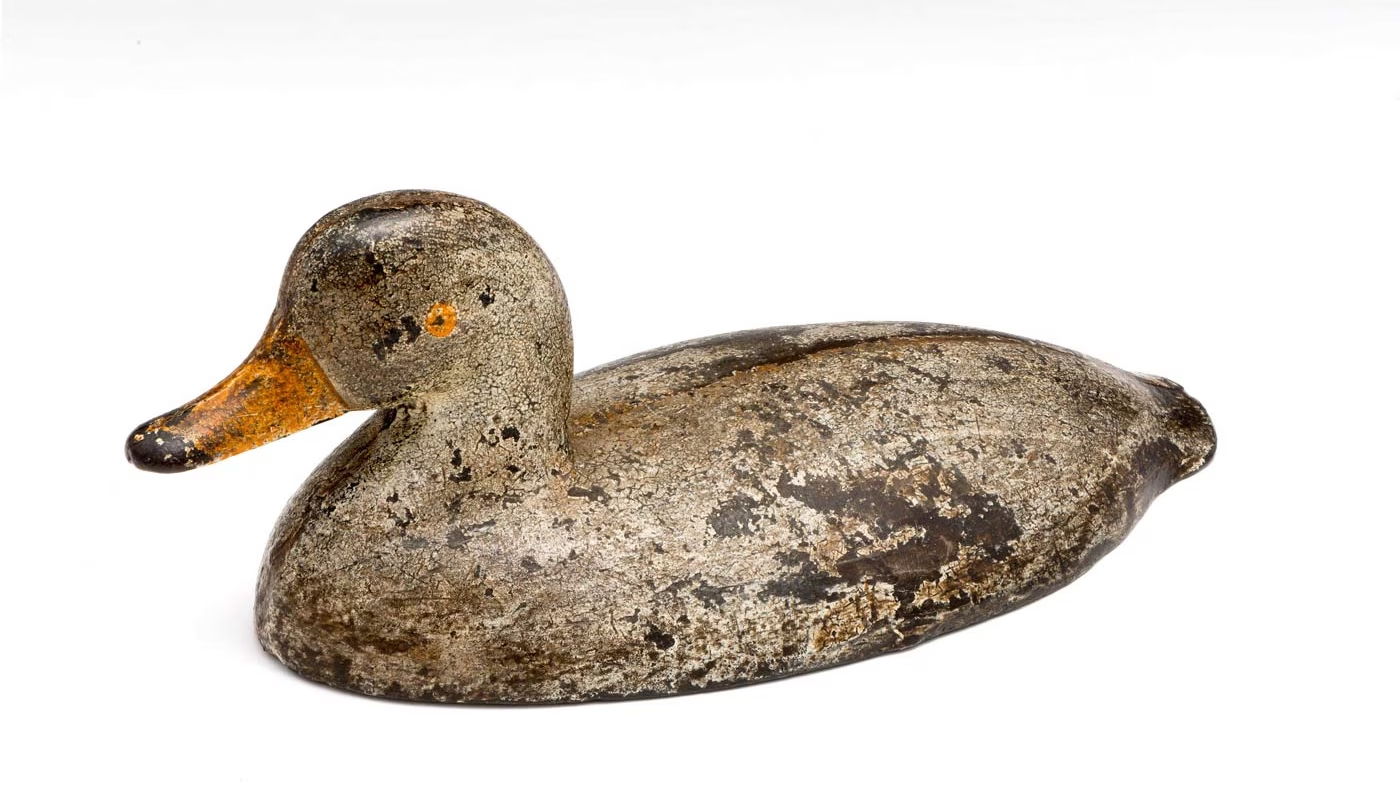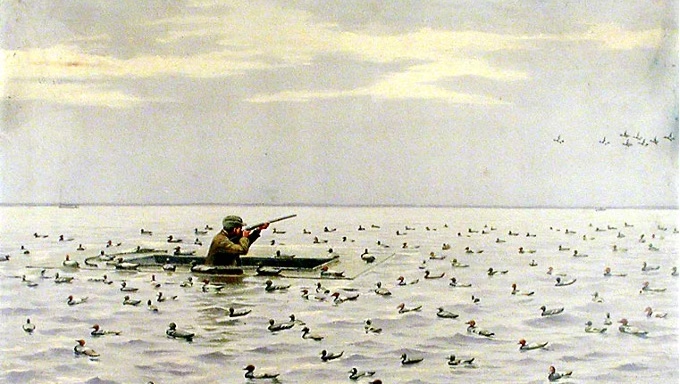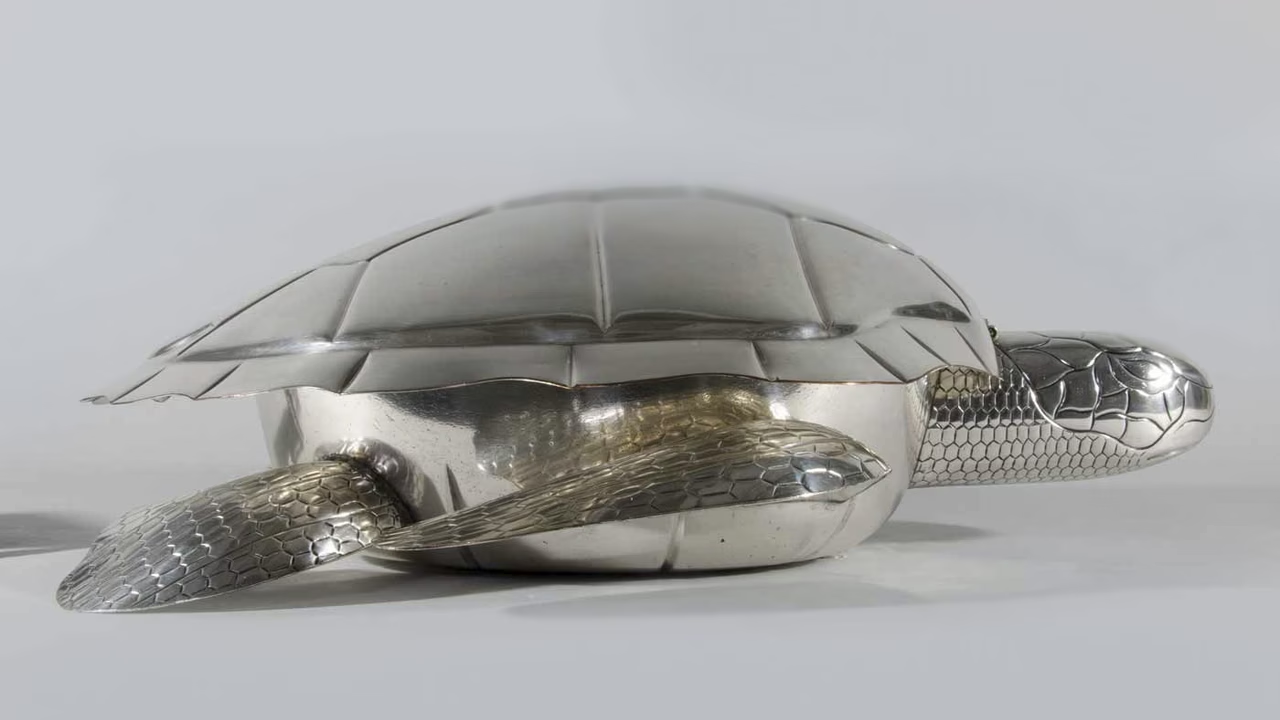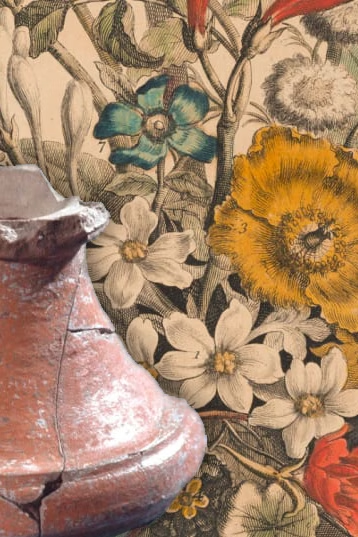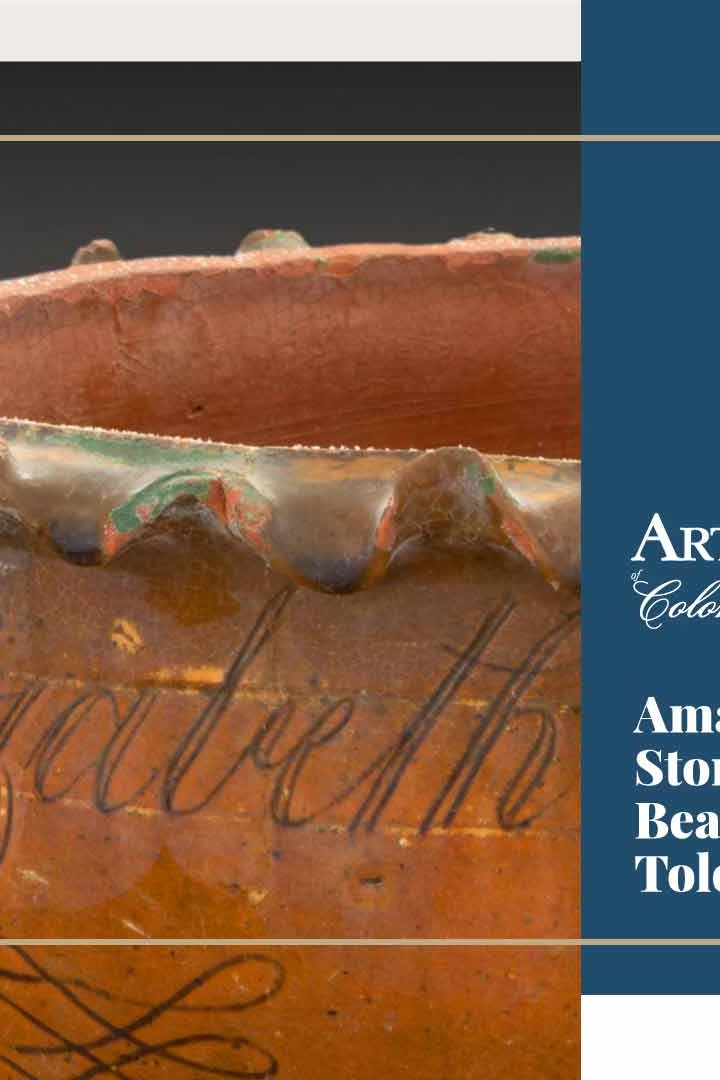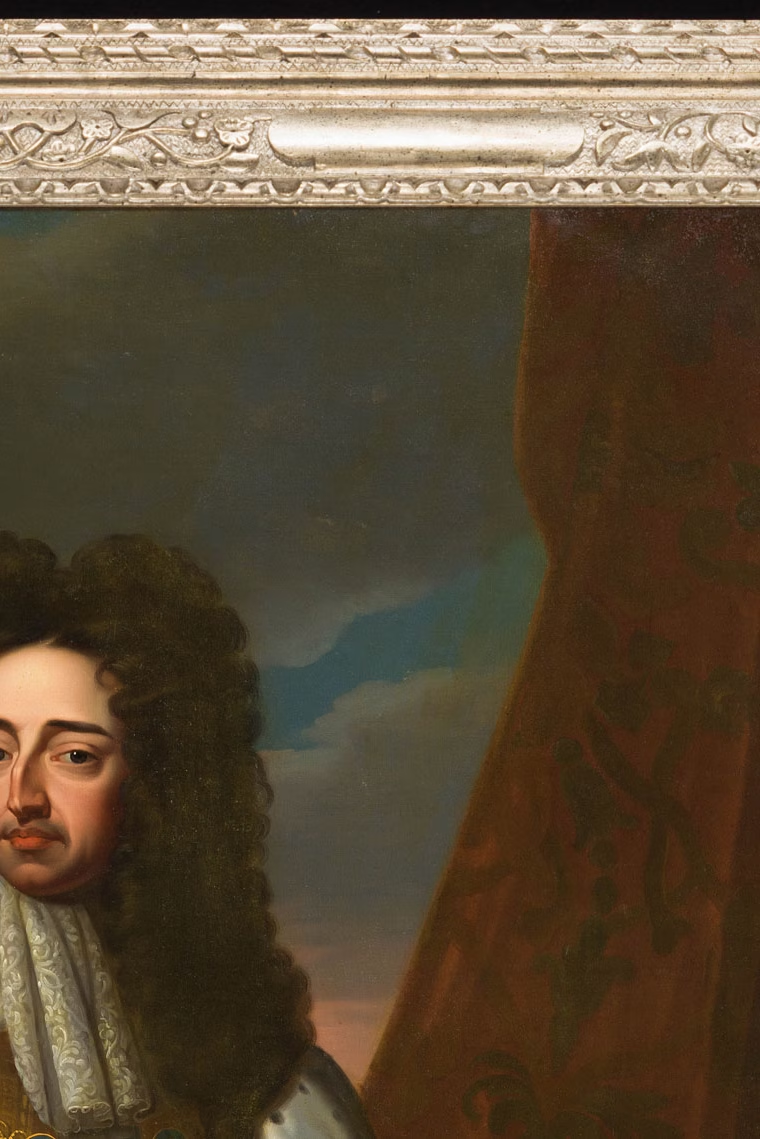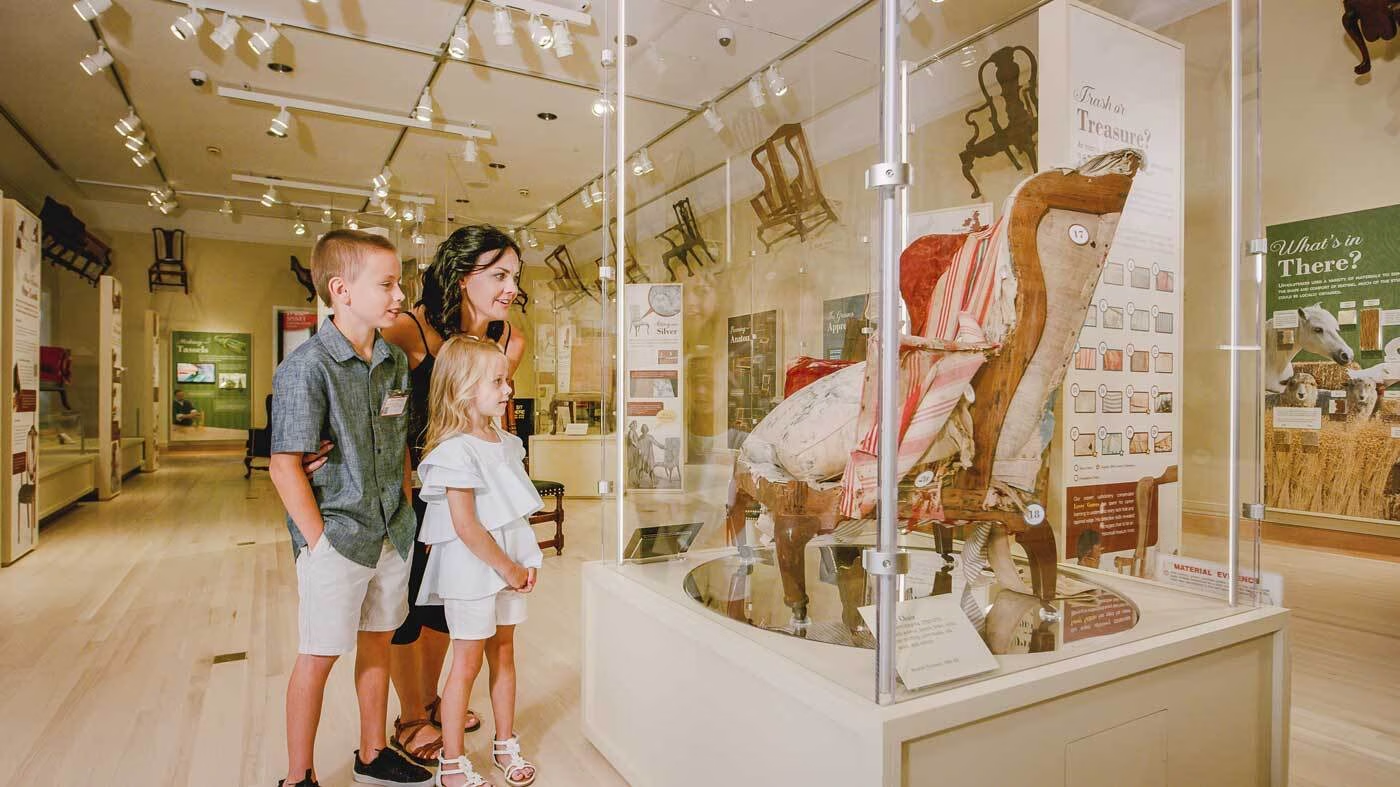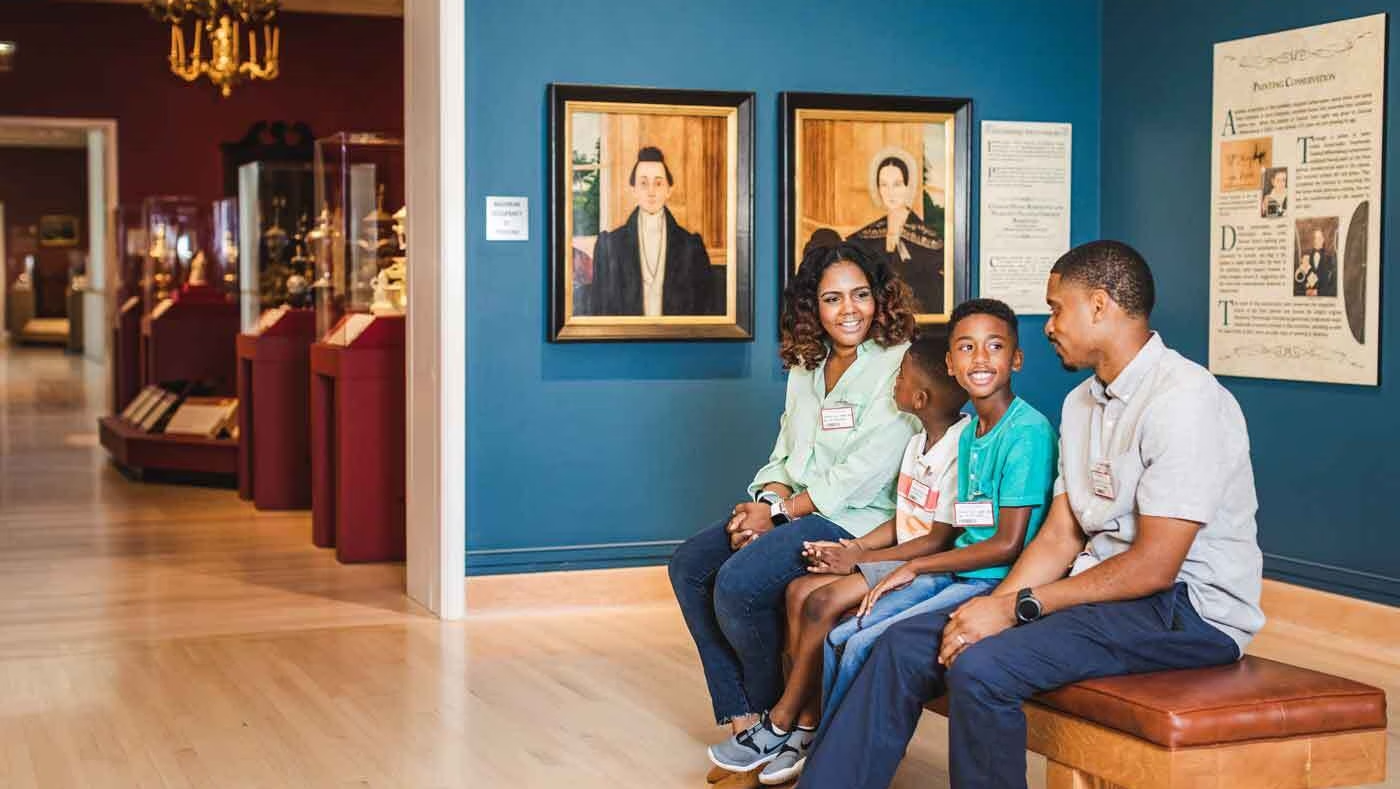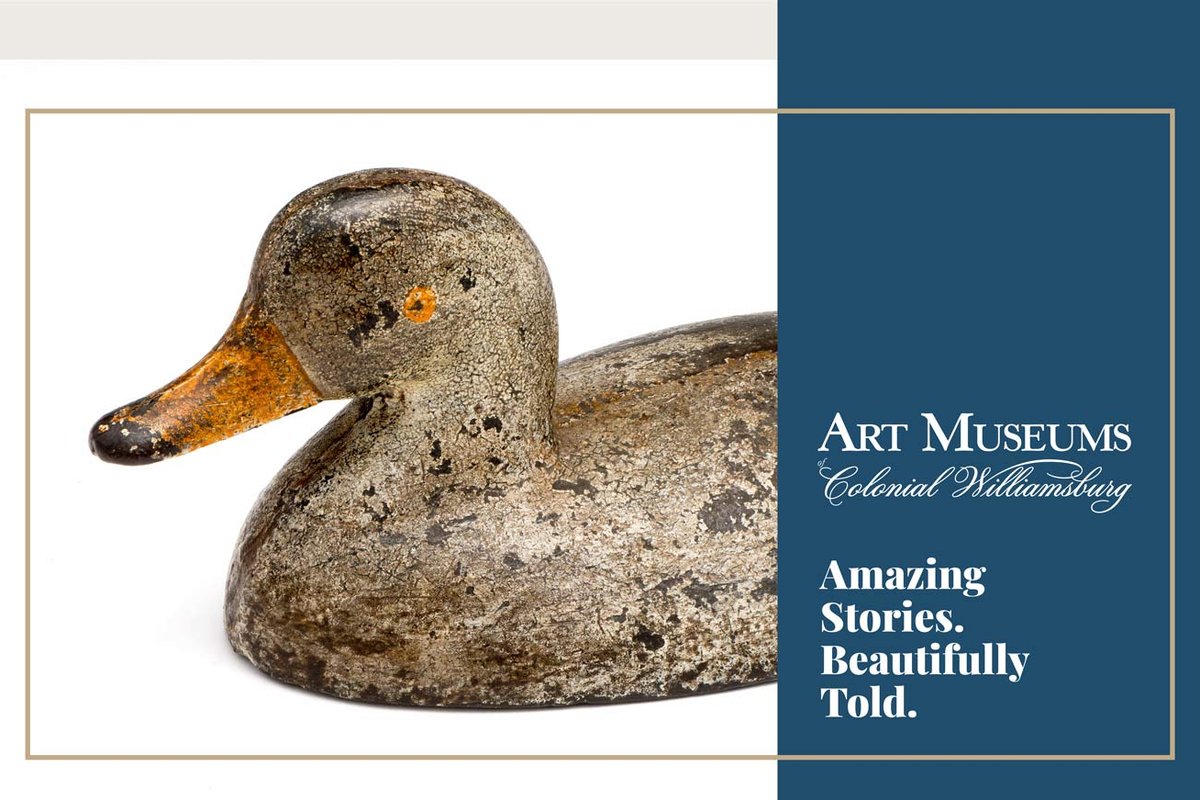
Iron Duck Decoy
Every object has a story. The Art Museums of Colonial Williamsburg tell the stories of a breathtaking range of folk and decorative art. Let's explore this duck decoy from our collections. Like this kind of stuff? We've got tons of it.
What is it?
A life-size, cast-iron version of the top part of a duck, painted white and yellow to resemble an American Pekin duck, 1880-1910.
What’s the Story?
Until outlawed in the vast majority of the United States in 1918, iron decoys were used for "sink box" hunting. This method required the hunter to be hidden in a watertight box sunk to its top and set some distance offshore. Projections called "wings" were attached to the top of the box on all sides and were weighted down with enough painted iron decoys to sink it to the waterline, making the box and its occupant invisible to the intended quarry.
This highly effective method allowed for dozens, if not hundreds, of birds to be shot at a time, making it a perfect strategy for those supplying duck meat to the food market. Recognizing the great threat sink box hunting posed to hunted species of waterfowl like ducks and geese, Federal and local governments put a decisive end to it. Today, sink box hunting is legal by permit only in the North Carolina’s Dare and Hyde Counties.
While this decoy started out as a weight for sink box hunting, its paint scheme suggests otherwise. A white body and a yellow beak identify it as an American Pekin, a common domestic duck known to bond with humans. Whether raised for meat and eggs or kept as a pet, these ducks weren't wild, and wouldn't have been the target of a hunter's lure. After sink box hunting was declared illegal, perhaps it was transformed into a useful household fixture, much like the affable duck it mimics.
Colonial Williamsburg’s iron duck was collected by Abby Aldrich Rockefeller and given to the Foundation in 1931. It was purportedly found in Ephrata, Pennsylvania.
See for Yourself
You can find this duck decoy and tens of thousands of objects in our Online Collections. We also invite you to see this remarkable object in person at the Art Museums of Colonial Williamsburg and discover more amazing stories, beautifully told.
Art Museums of Colonial Williamsburg
Explore museum experiences, collections, exhibitions, virtual experiences, conservation, and more.
